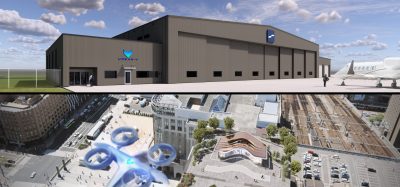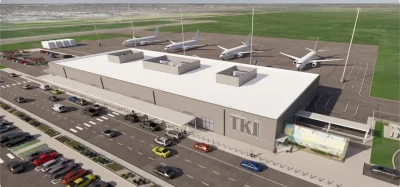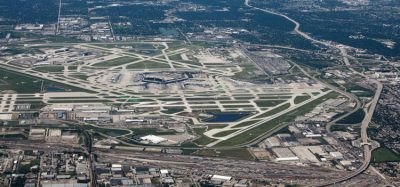Katowice Airport reveals 2024-2028 investment programme
Posted: 8 February 2024 | International Airport Review | No comments yet
The Upper Silesian Aviation Group (GTL SA) has presented the Katowice Airport investment programme for 2024-2028.
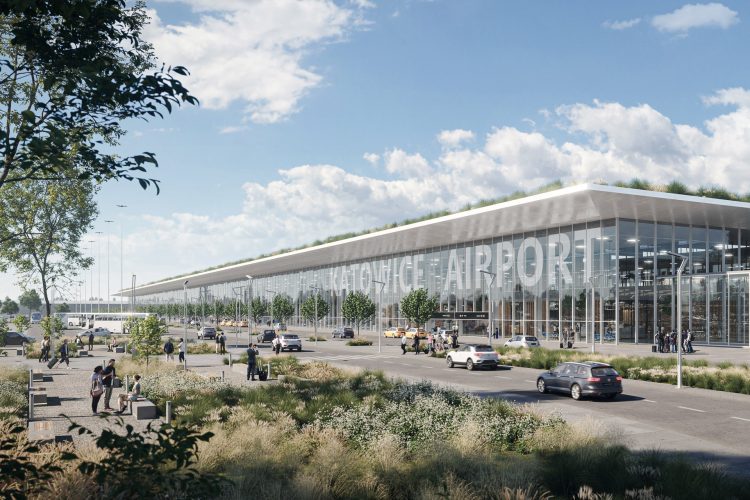

Central Terminal. CREDIT: Katowice Airport
The Upper Silesian Aviation Group (GTL SA) has presented the Katowice Airport investment programme for 2024-2028. The plan covers the expansion of all airport areas, i.e. passenger, aircraft maintenance and cargo. Furthermore, GTL SA plans to develop a fourth area in the form of a multimodal goods and fuel delivery hub with railway siding connection. The biggest and most expensive project planned in the investment programme for 2024-2028 is the construction of the central passenger terminal.
The passenger area expansion concept was prepared with Arup – an international company which employs 18 thousand engineers, designers, planners and consultants in 90 offices around the world. Arup was established in 1946; the company specialises in preparing complex infrastructure projects. Since 1998, the company is present in Poland and is responsible, among others, for planning the development of airports for approx. 85% of air traffic in the country.
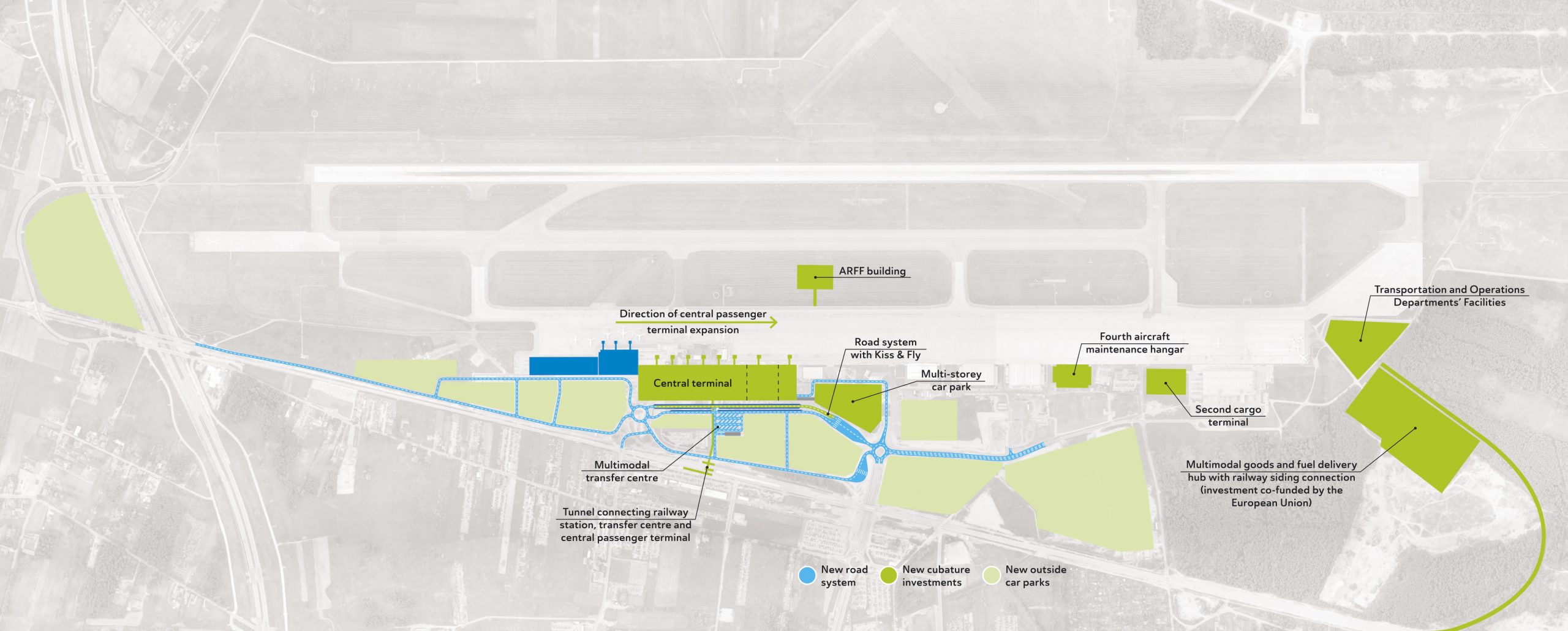

Important investment plans. CREDIT: Katowice Airport
Passenger traffic forecasts
The starting point for preparing the passenger traffic infrastructure development concept was the new traffic forecast for Katowice Airport up to 2040, which was developed by the GTL SA team, and validated by Arup. The forecast estimates that approx. 7.5 million passengers should travel via the Katowice Airport network of flights in 2028, while 10 million passengers may be served in 2033. In its latest air traffic forecast for Poland in 2022-2040, presented in September 2023, the Civil Aviation Authority (Urząd Lotnictwa Cywilnego) estimates that Katowice Airport will be one of three Polish regional airports which will handle over 10 million passengers in a year by 2040.
Join us live: Shaping the Next Generation of Hold Baggage and Air Cargo Screening
Join us live for an insightful webinar on 11th December at 14:00 GMT, in collaboration with Smiths Detection, as we explore the strategic balance of operational efficiency, regulatory compliance, and sustainability in high-volume security environments.
This session offers a focused look into future-proofing your security strategy.
Key learning points
- Cost Reduction: Strategies to minimize bag travel time while simultaneously reducing operational costs.
- Regulatory Roadmap: Insights into the next wave of regulatory changes and their impact on future investment decisions.
- Sustainable Systems: Practical approaches to building sustainability into security systems and lowering the total cost of ownership (TCO).
- Scalable Solutions: Real-world examples of scalable systems supporting current airport growth and preparing for tomorrow.
Register now for expert insights, case studies, and actionable strategies on operational efficiency!
Both the forecast prepared by GTL SA, as well as the forecast presented independently by the Civil Aviation Authority indicate that considerable expansion of the Katowice Airport infrastructure, allowing to comfortably handle the growing passenger traffic, is necessary.
Central passenger terminal, transfer centre, new road system
The most important part of the investment programme is the construction of a central passenger terminal covering an area of 49 thousand m2; it will be equipped with jet bridges, and connected with “Pyrzowice Lotnisko” (Katowice Airport) railway station via a tunnel. The new terminal will be built to the east of the existing passenger terminals, in the area where the oldest civil part of the airport, created since the 1960s, is located.
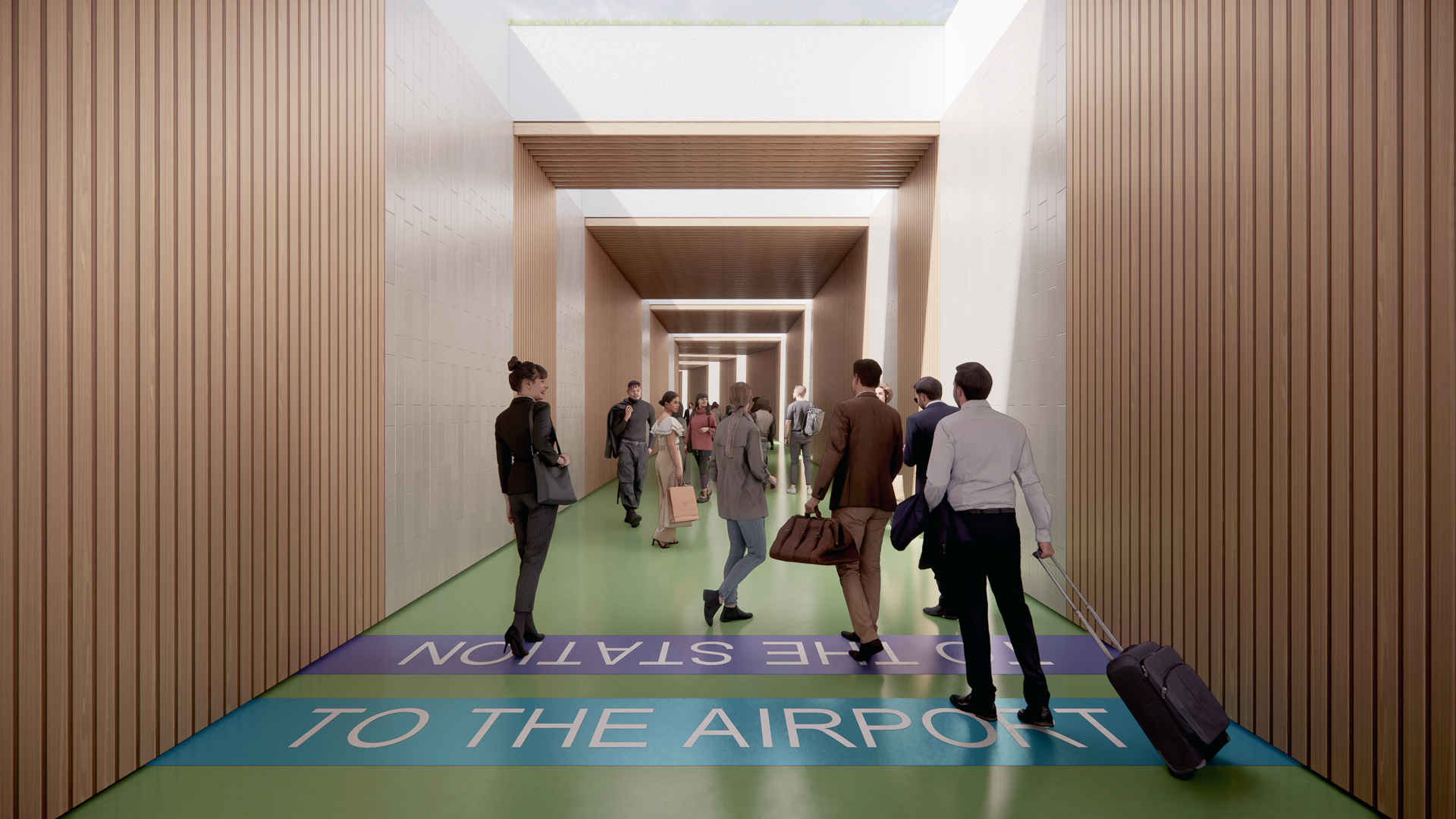

Tunnel station at central terminal. CREDIT: Katowice Airport
The central passenger terminal will have two storeys. On the ground floor located will be the check-in area and the arrivals hall. On the +1 floor, central security control, passport control area and the departures hall will be located.
The new terminal will be connected with the “Pyrzowice Lotnisko” (Katowice Airport) railway station via a 270 metres long tunnel. Between the central terminal and railway station, a transfer centre for buses will be located.
In front of the central passenger terminal, a new road system, with new entrance and exit gates and a Kiss & Fly area, will be created.
In 2028, after putting the first part of the central passenger terminal into service, the total surface of the Katowice Airport terminal infrastructure will be 83 thousand m2, allowing to handle in comfortable conditions approximately eight million passengers in a single year. In the future, GTL SA plans to continue the terminal’s expansion, so that by 2032 the surface of the terminal infrastructure will be 96 thousand m2, allowing to reach the throughput of 10 million passengers yearly. After 2032, if such a need arises, the central terminal may be modularly expanded to the east, in the first phase reaching a throughput of the entire terminal infrastructure of 12 million passengers yearly, and 15 million passengers in the second phase.
Expansion of outside car parks, multi-storey car park
Due to the forecast growth of passenger traffic, the need for parking spaces will also grow. Currently, the car parks at Katowice Airport have approx. 5.5 parking spaces. In the foreseeable future, GTL SA plans to build approximately eight thousand new parking spaces, 6.5 thousand of which will be located in outside car parks. As part of the investment programme, a multi-storey car park, with 1500 spaces initially, will be created by 2028. The building will be located near the new roundabout, which was put into service in June 2023. The multi-storey car park will be connected with the central terminal via a glazed pass.
Fourth hangar, second cargo terminal
Construction of H4 hangar is planned between H3 hangar and PANSA’s air traffic control tower. The building will be identical to the H3 hangar; its surface will be approx. 9.2 thousand m2. Two bays allowing to serve aircraft the size of an Airbus A321neo will be the heart of the building.
The second cargo terminal will be created in the south-eastern part of the airport, in the cargo area. The planned surface of the building is approx. 10 thousand m2. After putting the second cargo terminal into service, the yearly throughput of the cargo terminal infrastructure at Katowice Airport will grow to approx. 75 thousand tonnes.
Construction of multimodal goods and fuel delivery hub with railway siding connection
The investment will be located in the south-eastern part of the airport. An unloading railway siding allowing to load and unload goods and fuel will be the heart of the investment; it will abut three 1000 m³ containers and two unloading stands for fuel trucks. In the area of the hub located in the restricted part of the airport, three stands with fuelling pumps for aviation fuel trucks will be created. In addition, a railway siding will be built to connect Katowice Airport with the Central Rail Line via railway line No. 182 Zawiercie – Tarnowskie Góry.
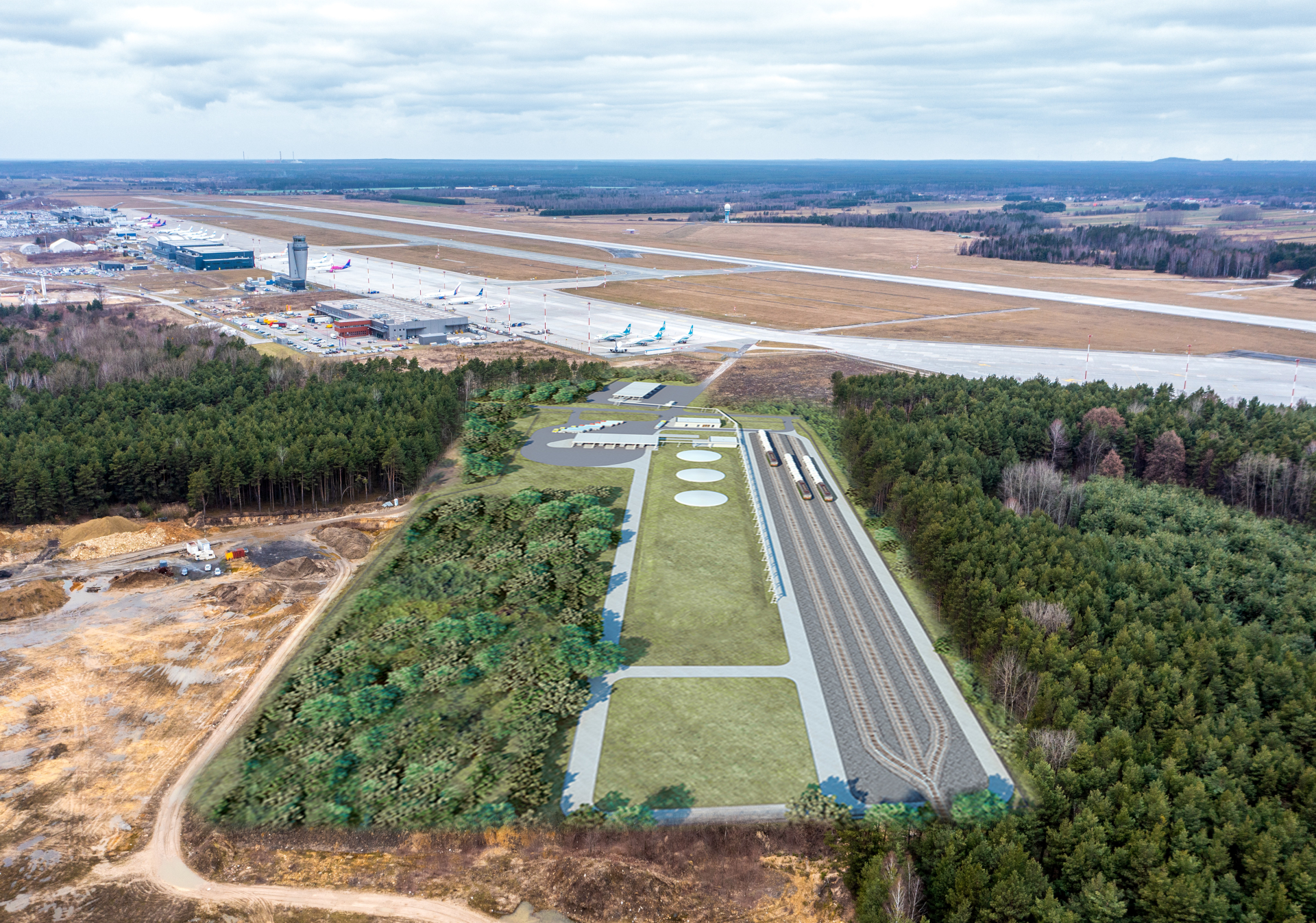

Multimodal goods and fuel delivery hub. CREDIT: Katowice Airport
“Construction of a multimodal goods and fuel delivery hub with railway siding connection at Katowice Airport” has received a grant from the European Union under the “Connecting Europe” Facility (CEF) 2021-2027 Military Mobility; the support will constitute up to 50% of eligible costs. The infrastructure is scheduled to be put into service in June 2026 at the latest.
New Airport Rescue and Firefighting building, new facilities for airport’s transportation and operations departments
Construction of the central passenger terminal will require the Airport Rescue and Firefighting (ARFF) unit to relocate to a new location. Consequently, GTL SA has planned the construction of a new crisis management centre, with an Airport Rescue and Firefighting building being its central point. It will be located between taxiways Alpha, Echo 2, Delta and Hotel 4. The project estimates that the building will cover an area of approx. 1.7 thousand m2.
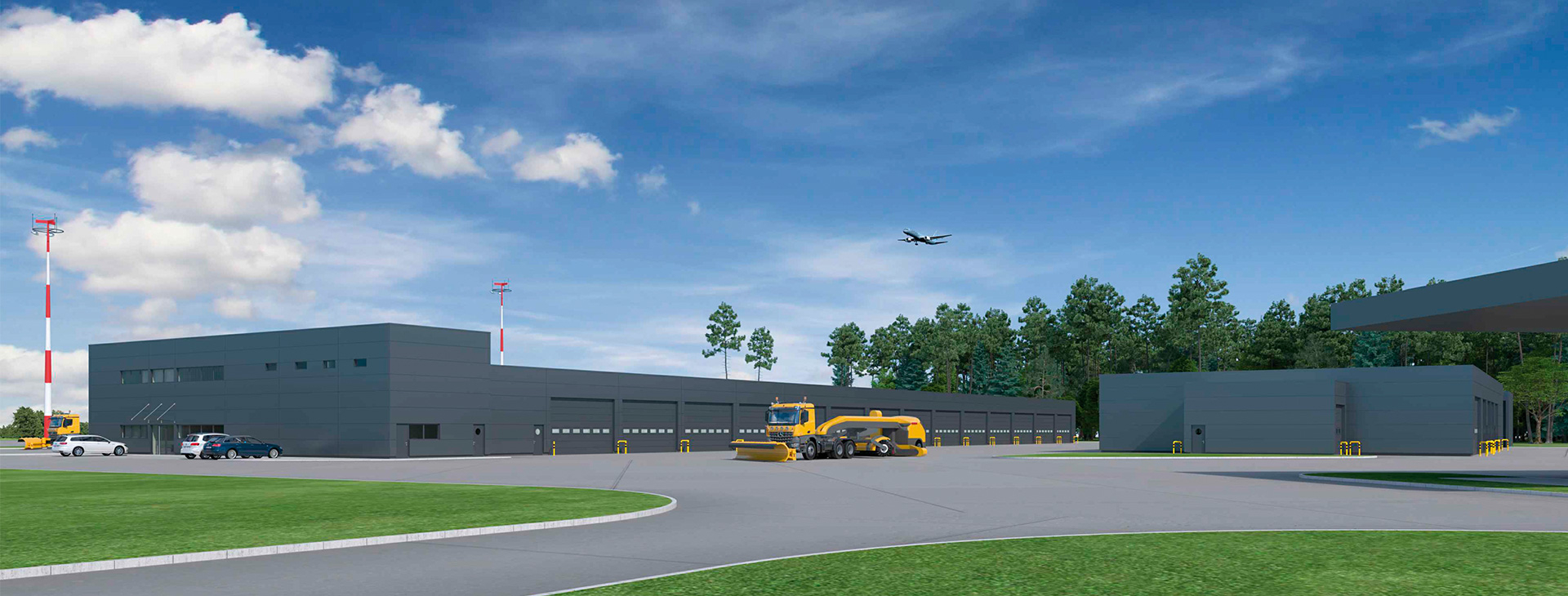

New facilities operations transportation. CREDIT: Katowice Airport
Furthermore, the construction of a multi-storey car park will require the airport’s transportation and operations departments’ facilities to be moved. The new infrastructure for these departments, which have at their disposal, among others, equipment used to maintain airport surfaces and grass areas during summer and winter, will be created on a plot located in the south-eastern part of the airport, between the de-icing apron and multimodal goods and fuel delivery hub.
Financing the Katowice Airport investment programme for 2024-2028
The estimated total cost of the Katowice Airport investment programme for 2024-2028 is approx. PLN 1.5B, including PLN 950M for the construction of the central passenger terminal. GTL SA plans to finance the project from own funds, a commercial credit, capital increase and European Union grant.
“We have prepared a complex programme for the expansion of Katowice Airport’s infrastructure, as part of which we put emphasis on diversity of provided infrastructure. Our goal is to strengthen the airport in all areas of activities, i.e. passenger traffic, aircraft maintenance and air cargo. Thanks to support from the European Union, we will also commence a new area in the form of a multimodal goods and fuel delivery hub.
Realisation of investments presented in the programme will allow to meet the demands of growing passenger traffic, as well as our contractors responsible for aircraft maintenance and cargo traffic. New infrastructure also means more employees. We estimate that approximately eight thousand persons will work in companies and state institutions at the airport by 2030.
Katowice Airport is one of the most precious assets of the Silesian Voivodeship. Therefore, we want its role on the map of European airports to be bigger, with benefit for the economy of the voivodeship and its inhabitants. Our dynamic expansion will allow us to reach that goal. The programme is ambitious, but I know we will complete it. Among our strengths is an experienced staff. Over the last fifteen years, our team has successfully carried out more than forty investments at Katowice Airport, including the construction of a new runway,” said Artur Tomasik, the President of the Board of the Upper Silesian Aviation Group (GTL SA), the company managing Katowice Airport.
“Katowice Airport is one of three most dynamically expanding regional airports in Poland. We have had the pleasure to co-operate with GTL SA for many years now. Our biggest joint project is the new passenger terminal concept.
Katowice Airport has long since reached the critical mass of a medium-sized regional port and further expansion through ‘budding’ ceases to make sense. Katowice Airport need a modern terminal, planned so that its functionality and flexibility allow to handle the dynamically – and often unpredictably – changing traffic. Simultaneously, with sustainable development in mind, it is necessary to carefully manage resources. Therefore, the new terminal will be integrated with the revitalized tissue of Terminal B. The task was difficult, but in our opinion worth the challenge, the implementation of which will please passengers and employees of the airport.
Katowice Airport is an example of an airport which addresses in advance the needs of its corporate clients, air carriers, maintenance and cargo operators, and, first and foremost, passengers,” said Ireneusz Kołodziej from Arup.
The International Airport Summit is open for registration!
Date: 19 – 20 November 2025
Location: JW Marriott Hotel Berlin
At our flagship event of the year, we will dive into the future of airport operations, with expert-led sessions on passenger experience, innovative smart technologies, baggage handling, airside operations, data, security, and sustainability.
This is where global airport leaders come together to share insights, challenges, and real-world solutions.
Limited complimentary passes are available for eligible professionals – first come, first served!
Related topics
Related airports
Related organisations
Civil Aviation Authority (CAA), Upper Silesian Aviation Group (GTL SA)




